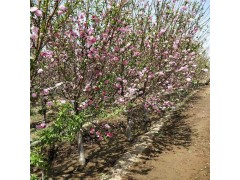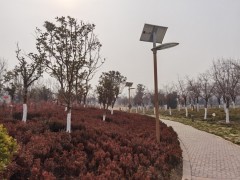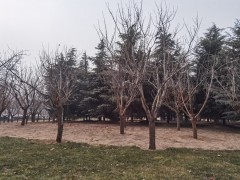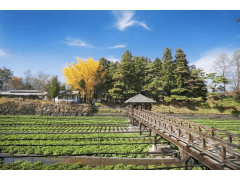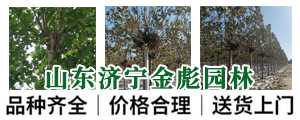铵态氮和硝态氮是植物最主要的两种无机氮源,但是过量铵态氮对植物细胞具有毒害作用。铵态氮的这一特性被认为是植物高效利用铵态氮的重要限制因子。然而人们对植物铵毒害机制的认识还很初步。随着分子生物学技术的发展,国际多个研究组对植物铵毒害的分子机制进行了相关探讨,目前在国际植物生物学top期刊已发表约10篇相关论文。
中科院南京土壤所施卫明研究员课题组率先应用模式植物拟南芥,研究植物铵毒害分子响应机制,分别在高铵调控植物的根系伸长、侧根形成、根的向地性及铵钾平衡等方面取得一系列进展。相关结果陆续发表在《土壤学报》(李保海和施卫明,2007, 44:508),Plant Cell and Environment(Li et al., 2010, 33:1529; Li et al., 2011, 34, 933; IF=5.2,植物科学一区),Journal of Experimental Botany (Zou et al., 2012, 63:3777; IF=5.3,植物科学二区), Planta (Li et al., 2012, 235:239; IF=3,植物科学二区)上。
最近,该团队在植物对铵响应的基因表达调控机制方面取得重要进展,相关结果已在植物科学一区期刊Plant Physiology (Li et al., 2012, doi:IF=6.5)在线发表。该研究通过正向遗传学、基因组学、生物信息学及生理学等手段,筛选获得一个在野生型拟南芥表现正常的较高浓度铵范围内,叶色黄化铵响应超敏感突变体amos1材料,基因图位克隆并互补验证amos1是一个定位于质体的金属蛋白酶EGY1的新等位突变。全基因组核基因转录分析发现铵胁迫响应的大量基因在amos1突变体中表达明显下降,说明定位于质体的AMOS1/EGY1是调控铵胁迫响应基因表达的关键因子。这也说明存在一条质体反馈调控信号途径调控铵胁迫响应基因的表达。
深入分析AMOS1/EGY1依赖的铵响应所有上调基因的启动子序列调控元件,发现其63%的基因在启动子区含有ACGTG序列,而该序列是植物激素脱落酸(ABA)信号的核心序列。这暗示着ABA信号很有可能参与AMOS1/EGY1依赖的质体反馈信号调控途径。进一步的药理学,转录组学和遗传学的结果证明ABA信号是AMOS1/EGY1依赖的质体反馈信号的一条重要但非唯一的下游信号途径。
该研究还进一步探讨了AMOS1/EGY1依赖的质体反馈信号途径中上游信号,发现质体中活性氧(ROS)是潜在质体信号物质。因此,该研究不仅寻找到一个调控铵响应的关键基因,而且系统地揭示了其相关的信号路径。该文章在线发表后,被Plant Signal and Behavior主编邀请撰写了相关综述。
在上述研究中发现一个有趣的现象,相比根部高铵,叶部接触高铵更容易抑制侧根形成,导致叶部黄化。这说明植物叶部是铵的相对敏感区域。这一机制也说明了实际农业生产中植物铵毒害现象更多地发生在苗期的原因,如过量尿素导致“烧苗”现象,可能是由于小苗叶部容易接触土壤中过量的铵态氮发生毒害。以上研究结果对合理施用叶面肥,种肥及苗期氮肥等具有一定的参考价值。
《植物生理学》发表论文摘要(英文)
Arabidopsis plastid AMOS1/EGY1 integrates ABA signaling to regulate global gene expression response to ammonium stress
Abstract
Ammonium (NH4+) is a ubiquitous intermediate of nitrogen metabolism, but is notorious for its toxic effects on most organisms. Extensive studies of the underlying mechanisms of NH4+ toxicity have been reported in plants, but it is poorly understood how plants acclimate to high levels of NH4+. Here we identified an Arabidopsis (Arabidopsis thaliana) ammonium-overly-sensitive 1 (amos1) mutant that displays severe chlorosis under NH4+ stress. Map-based cloning shows amos1 to carry a mutation in EGY1, which encodes a plastid metalloprotease. Transcriptomic analysis reveals that among the genes activated in response to NH4+ 90% are regulated dependent on AMOS1/EGY1. Furthermore, 63% of AMOS1/EGY1-dependent NH4+-activated genes contain an ACGTG motif in their promoter region, a core motif of abscisic-acid (ABA)-responsive elements. Consistent with this, our physiological, pharmacological, transcriptomic and genetic data show that ABA signaling is a critical, but not the sole, downstream component of the AMOS1/EGY1-dependent pathway that regulates the expression of NH4+-responsive genes and maintains chloroplast functionality under NH4+ stress. Importantly, abi4 mutants defective in ABA-dependent and retrograde signaling, but not ABA-deficient mutants, mimick leaf NH4+ hypersensitivity of amos1. In summary, our findings suggest that an NH4+-responsive plastid retrograde pathway, which depends on AMOS1/EGY1 function and integrates with ABA signaling, is required for the regulation of expression of NH4+-responsive genes that maintain chloroplast integrity in the presence of high NH4+ levels.



